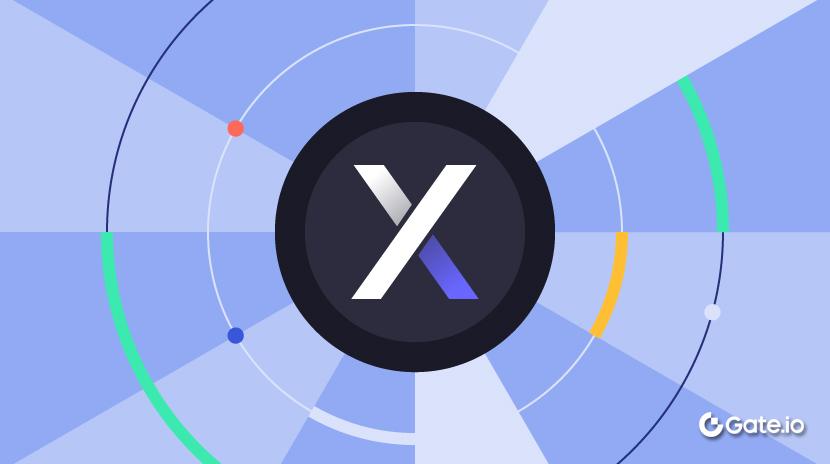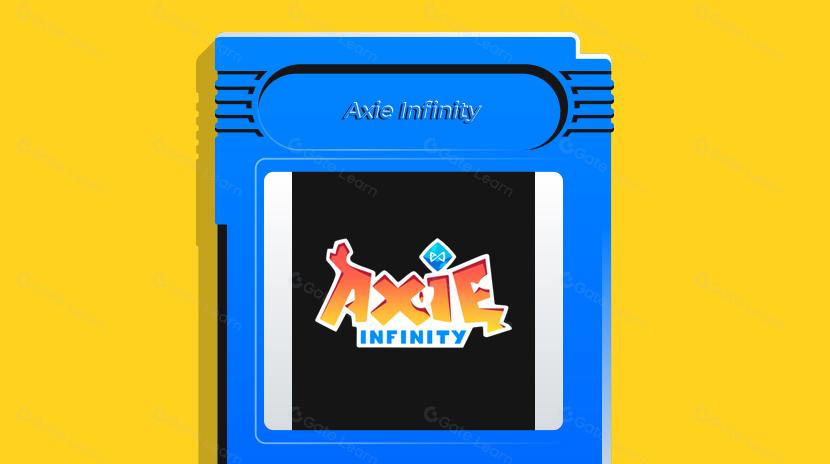Superposisi: Sebuah DeFi Layer-3 dengan Generasi Yield Asli
Pengantar
Di ruang DeFi, biaya transaksi dan efisiensi likuiditas selalu menjadi tantangan utama. Superposition mengusulkan solusi berani: memungkinkan pengguna untuk mendapatkan hasil asli melalui transaksi dan memanfaatkan buku pesanan on-chain untuk memfasilitasi pembagian likuiditas. Pendekatan ini tidak hanya mengganggu model biaya tradisional tetapi juga membuka kemungkinan baru bagi pengembang dan pengguna. Sebagai rantai aplikasi Layer 3 pertama yang secara khusus dirancang untuk DeFi, apakah Superposition dapat memenuhi janjinya? Mari kita lihat lebih dekat.
Superposisi: Sebuah Layer-3 DeFi dengan Yield Asli
Pengantar Superposisi
Diluncurkan oleh Fluidity Labs pada Juli 2023, Superposition adalah rantai Layer 3 pertama yang dirancang secara eksklusif untuk DeFi. Dibangun di atas Arbitrum One, itu memanfaatkan Arbitrum Orbit (sebuah kerangka kerja untuk dengan mudah mendeploy blockchain kustom) dan Stylus (yang mendukung pengembangan kontrak pintar multi-bahasa, meningkatkan kinerja dan mengurangi biaya gas). Superposition bertujuan untuk menawarkan pengalaman perdagangan DeFi yang murah dan sangat cepat.
Arsitektur inti dari Superposisi, yang dikenal sebagai Lapisan Super, terdiri dari Aset Super, Buku Pesanan Longtail (Superbook), dan Utility Mining:
- Aset Super: Ketika aset dijembatani ke Superposition, mereka secara otomatis dikonversi menjadi Aset Super—aset yang menghasilkan imbal hasil yang menawarkan pengembalian apakah dipegang secara pasif atau digunakan secara aktif. Imbal hasil ini berasal dari bunga yang diperoleh dengan meminjamkan aset yang mendasarinya. Ketika lebih banyak pengguna mengadopsi Aset Super, protokol bahkan dapat menawarkan biaya transaksi negatif—artinya blockchain membayar pengguna untuk melakukan transaksi.
- Buku Pesanan Ekor Panjang (Superbook): Superposition menggunakan model Buku Pesanan Batas Sentral sepenuhnya on-chain (CLOB), memungkinkan semua aplikasi dalam ekosistem berbagi likuiditas. Hal ini memberikan beberapa manfaat kunci:
- Efisiensi Modal yang Ditingkatkan: Dengan mengagregasi likuiditas, Buku Pesanan Longtail memastikan modal tidak menganggur.
- Mengatasi "masalah likuiditas awal" bagi pengembang: Pengembang dapat memanfaatkan likuiditas Superbook sejak hari pertama, mempercepat peluncuran aplikasi-inovatif.
- Keadilan Pasar: Terlepas dari ukuran, semua peserta dapat mengakses kolam likuiditas bersama, memastikan lingkungan pasar yang adil dan efisien.
- Utility Mining: Ini adalah mekanisme insentif inovatif yang memungkinkan Superposition dan pengembang DApp-nya untuk mendistribusikan imbalan dan token berdasarkan aktivitas pengguna. Ini dirancang untuk meningkatkan keterlibatan pengguna dan mendorong vitalitas ekosistem.
Secara ringkas, Superposition mengintegrasikan mekanisme hasil asli dan memanfaatkan buku pesanan on-chain untuk memungkinkan likuiditas bersama di seluruh ekosistemnya, meningkatkan efisiensi modal dan pengalaman perdagangan pengguna.

Superposition X Cover
(Sumber: https://x.com/Superpositionso)
Proyek Ekosistem
Versi Alpha dari mainnet Superposition diluncurkan pada pertengahan Januari tahun ini, dan lebih dari 40.000 NFT kenang-kenangan resmi telah diciptakan. Untuk merasakan transaksi yang sangat cepat dan murah dari Superposition, pengguna dapat pertama-tama mentransfer aset melaluijembatan resmidan jelajahi ekosistemnya yang terus berkembang, yang mencakup aplikasi-aplikasi berikut:
- DEX – Longtail: AMM pertama yang dibangun dengan Arbitrum Stylus dan DApp asli di Superposition L3. Semua pasangan perdagangan terikat pada Super Assets, memastikan setiap perdagangan diincentivasi. Saat ini mendukung aset seperti ETH, WBTC, USDC, dan ARB. Direncanakan akan berkembang dari AMM menjadi Central Limit Order Book (CLOB) sepenuhnya on-chain.
- DEX – Camelot: Mendukung pertukaran token dan pertambangan likuiditas. Telah menghasilkan lebih dari $20 juta dalam volume perdagangan dengan Longtail.
- Layanan Domain – Meow.Domains: Mengubah alamat dompet menjadi nama domain berakhiran ".meow", dengan harga mulai dari 0,0021 ETH (sekitar $4). Lebih dari 10.000 domain telah terdaftar sejauh ini.
- Pasaran Prediksi – 9lives: Dikembangkan oleh tim Superposition, platform ini kini memiliki lebih dari 1.000 pasar prediksi, meliputi tren pasar, olahraga, dan bisnis.
Setelah sekitar dua bulan beroperasi, Total Nilai Terjamin (TVS) Superposition telah melampaui$1.3 jutadengan total transaksi melebihi 2 juta. Saat lebih banyak protokol terus diluncurkan, ekosistem Superposition terus berkembang secara stabil.

Aplikasi Ekosistem Diagram dan Superposisi
(Sumber:https://superposition.so/mainnet-dapps)
3. Tim dan Pendanaan
Superposisi dikembangkan olehFluidity Labs, tim di balik protokol penghasil imbal hasil Fluidity. Tim berfokus pada memberikan insentif kepada pengguna untuk aktif menggunakan aset kripto. Sebagai hasilnya, Superposition memiliki beberapa koneksi dengan Fluidity, terutama mengenai mekanisme imbal hasil dan tokenomika. Anggota inti tim termasuk:
Alexander Baigent: Co-founder dan CTO. Dia telah terlibat dalam rekayasa perangkat lunak sejak 2013 dan memegang gelar dalam Keuangan Perusahaan dari Universitas Adelaide. Dia memimpin pengembangan teknis untuk kedua Fluidity dan Superposition. \
Shahmeer Chaudhry: Seorang pendiri bersama. Lulusan dari Universitas Adelaide, ia dinobatkan sebagai salah satu dari "Top 25 Bakat Teknologi di Bawah 25 Tahun" di Pakistan. Dia telah berhasil dalam desain game dan pengembangan blockchain. \
Ivan Seara Nunes: Chief Product Officer. Saat ini mengejar gelar ganda di Universitas Adelaide, ia memiliki pengalaman lebih dari tiga tahun dalam pengembangan produk dan strategi, berfokus pada manajemen tim dan pengiriman nilai. \
Mekanisme hasil Superposition terinspirasi dari Aset Fluidity—sejenis aset terbungkus yang dipasangkan 1:1 yang memberi hadiah kepada pengguna saat digunakan. Hadiah-hadiah ini berasal dari hasil kumulatif yang dihasilkan dengan mendeposit dan meminjam aset-aset yang mendasari melalui pasar uang, memungkinkan pengguna untuk mendapatkan pengembalian tambahan melalui transaksi sehari-hari.
Saat ini, Superposition belum secara publik mengungkapkan jumlah penggalangan dana atau daftar investor. Namun, menurut whitepaper-nya, 20% alokasi token-nya disediakan untuk investor, menunjukkan adanya pendanaan eksternal. Terutama, pada Oktober 2022, Fluidity berhasil mengumpulkan $1,3 juta dalam putaran awal yang dipimpin oleh Multicoin Capital, dengan partisipasi dari Circle Ventures, Solana Ventures, Lemniscap, dan lainnya.

Diagram: Fluidity Mengamankan $1.3 Juta Pendanaan, Dipimpin oleh Modal Multicoin
(Sumber: https://blog.fluidity.money/fluidity-announces-1-3-million-seed-round-led-by-multicoin-capital-943ee3fbe0e6)
Tokenomics
Token asli Superposition adalah $SPN, dengan total pasokan 10 miliar token, yang semuanya akan sepenuhnya terbuka dalam empat tahun setelah Acara Generasi Token (TGE). Token-token ini ditujukan untuk tujuan seperti tata kelola, imbalan pertambangan likuiditas, dan penempatan. Setelah periode empat tahun awal, DAO dapat mengizinkan penerbitan tambahan hingga 2% untuk mendukung pertumbuhan protokol dan operasi.

Grafik Harga Fluidity ($FLY)
Selain $SPN, para pemegang token governance Fluidity $FLY juga memengaruhi operasi Superposition—misalnya, dengan memberikan suara pada distribusi reward di berbagai pasangan perdagangan. Selain itu, pendapatan tambahan yang dihasilkan dari aktivitas perdagangan Superposition akan dibagikan kepada pemegang $FLY.

Tren Harga Fluidity ($FLY)
Sebuah Patokan Baru untuk Rantai Aplikasi DeFi?
Superposisi sedang mendefinisikan ulang cara teknologi blockchain berinteraksi—bukan hanya dengan memperkenalkan abstraksi akun untuk menurunkan hambatan bagi pengguna, tetapi juga dengan menawarkan imbalan tambahan. Ekosistem saat ini sedang dalam fase ekspansi dan telah terintegrasi dengan proyek-proyek seperti LayerZero, Conduit, dan Hyperlane untuk meningkatkan interoperabilitas. Mekanisme insentif sedang digunakan untuk menarik lebih banyak pengguna dan pengembang. Keterlibatan komunitas yang semakin meningkat dapat diamati melalui metrik seperti jumlah NFT kenang-kenangan dan pendaftaran domain, menunjukkan ekosistem memiliki potensi pengembangan yang kuat.
Namun, sebagai rantai aplikasi spesifik DeFi, apakah Superposition dapat mendapatkan daya tarik pasar akan tergantung pada beberapa faktor: kelancaran pengalaman pengguna, kekayaan ekosistem, ketersediaan peluang penambangan likuiditas hasil tinggi, dan apakah ekosistem dapat menghasilkan efek kekayaan yang signifikan. Ke depan, titik-titik kunci yang perlu diperhatikan termasuk apakah Superposition dapat secara efektif mengkonsolidasikan likuiditas melalui order book-nya untuk meningkatkan efisiensi modal, dan apakah model distribusi token Utility Mining inovatifnya dapat memberikan pengembalian yang berarti dan menarik bagi pengguna.
Artikel Terkait

Apa Itu Narasi Kripto? Narasi Teratas untuk 2025 (DIPERBARUI)

Apa itu Stablecoin?

ONDO, Proyek yang Disukai oleh BlackRock

Apa itu dYdX? Yang Perlu Anda Ketahui Tentang DYDX

Apa itu Axie Infinity?
